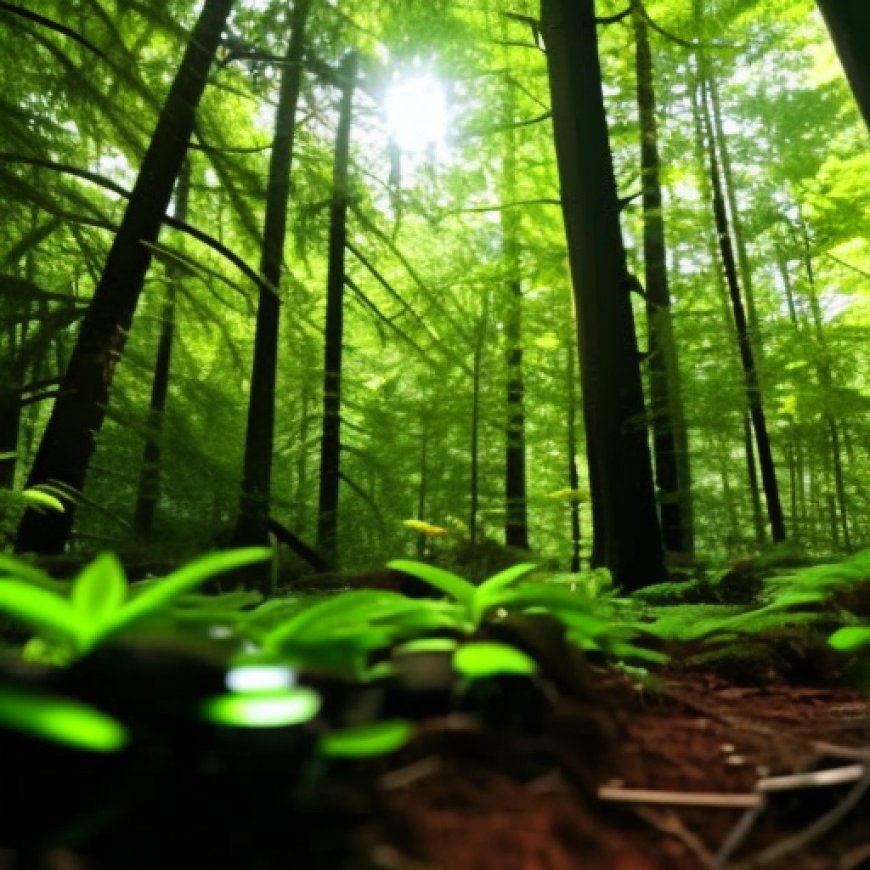Forestry Grants Available to Protect Private Forestlands
Forestry Grants Available to Protect Private Forestlands tn.gov


NASHVILLE
A special round of Forest Legacy Program (FLP) funding is giving landowners an opportunity to ensure forest conservation benefits for generations to come.
Introduction
The Forest Legacy Program (FLP) is a conservation program administered by the U.S. Forest Service in partnership with the Tennessee Department of Agriculture’s Division of Forestry. Its aim is to protect privately-owned forest lands from conversion to non-forest uses through conservation easements or land purchases.
Importance of Forest Conservation
Conversion of forest land into areas for housing or commercial buildings is a significant threat in Tennessee. However, there are grants available to landowners who want to keep their forests productive for generations. These grants encourage sustainable forest management and support strong markets for forest products. FLP provides landowners with options to keep their land private and support economies and conservation.
Funding Opportunities
Landowners in Tennessee can now submit project proposals for FLP funding until January 19, 2024 at 4:30 p.m. CST. Applications that offer significant natural carbon sequestration benefits or provide benefits to underserved populations will be prioritized.
Benefits of Forest Conservation
Keeping Tennessee land in traditional forest uses contributes to the achievement of the Sustainable Development Goals (SDGs), particularly in the areas of improved water quality, fish and wildlife habitat, timber, fuel wood, other forest products, and recreation opportunities through active forest management.
Current Conservation Efforts
FLP in Tennessee currently conserves 53,315 acres valued at $59 million across the state.
More Information
For more information about Tennessee’s Forest Legacy Program and to find the request for proposal package, visit www.tn.gov/agriculture/forests/protection/legacy.html. For any questions about FLP, contact Assistant State Forester Heather Slayton at 615-837-5432 or heather.slayton@tn.gov.
About the Division of Forestry
The Division of Forestry protects and promotes the responsible use of forest resources in Tennessee. Its focus areas include assisting landowners with a variety of services, providing quality tree seedlings, supporting forest health programs, collecting forest inventory data, assisting forest industries, and fighting wildland fires. Visit www.tn.gov/agriculture/forests for more information.
SDGs, Targets, and Indicators
| SDGs | Targets | Indicators |
|---|---|---|
SDG 15: Life on Land |
|
|
SDG 11: Sustainable Cities and Communities |
|
|
SDG 13: Climate Action |
|
|
1. Which SDGs are addressed or connected to the issues highlighted in the article?
The issues highlighted in the article are connected to SDG 15: Life on Land, SDG 11: Sustainable Cities and Communities, and SDG 13: Climate Action.
2. What specific targets under those SDGs can be identified based on the article’s content?
Based on the article’s content, the specific targets that can be identified are:
- Target 15.2: By 2020, promote the implementation of sustainable management of all types of forests, halt deforestation, restore degraded forests, and substantially increase afforestation and reforestation globally.
- Target 11.7: By 2030, provide universal access to safe, inclusive, and accessible, green, and public spaces, in particular for women and children, older persons, and persons with disabilities.
- Target 13.2: Integrate climate change measures into national policies, strategies, and planning.
3. Are there any indicators mentioned or implied in the article that can be used to measure progress towards the identified targets?
There is one indicator mentioned in the article that can be used to measure progress towards the identified targets:
- Indicator 15.2.1: Progress towards sustainable forest management.
4. Create a table with three columns titled ‘SDGs, Targets and Indicators” to present the findings from analyzing the article. In this table, list the Sustainable Development Goals (SDGs), their corresponding targets, and the specific indicators identified in the article.
| SDGs | Targets | Indicators |
|---|---|---|
SDG 15: Life on Land |
|
|
SDG 11: Sustainable Cities and Communities |
|
|
SDG 13: Climate Action |
|
|
Behold! This splendid article springs forth from the wellspring of knowledge, shaped by a wondrous proprietary AI technology that delved into a vast ocean of data, illuminating the path towards the Sustainable Development Goals. Remember that all rights are reserved by SDG Investors LLC, empowering us to champion progress together.
Source: tn.gov

Join us, as fellow seekers of change, on a transformative journey at https://sdgtalks.ai/welcome, where you can become a member and actively contribute to shaping a brighter future.







